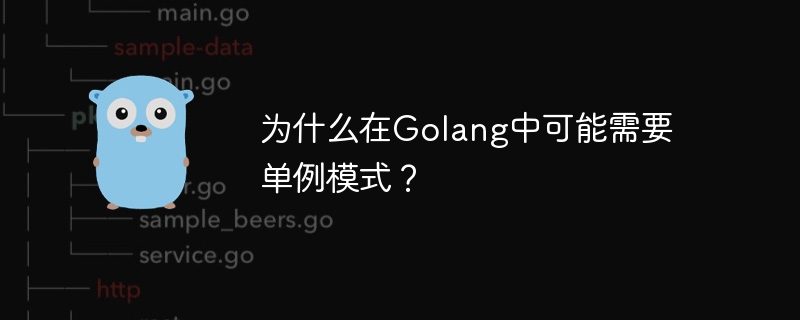

The singleton pattern may be needed in Golang because in some cases, we want to ensure that an object of a certain type is only created once in the program to reduce resource consumption or avoid Problems caused by generating multiple instances. Singleton pattern is a design pattern used to ensure that a class has only one instance and provides a global access point.
In Golang, the singleton mode can be implemented by using package-level variables and sync.Once. The following uses a specific code example to illustrate why the singleton pattern may be needed in Golang.
First, we define a structure to represent a singleton object:
package singleton
import (
"fmt"
"sync"
)
type Singleton struct {
value int
}
var instance *Singleton
var once sync.Once
func GetInstance() *Singleton {
once.Do(func() {
instance = &Singleton{value: 0}
})
return instance
}
func (s *Singleton) SetValue(val int) {
s.value = val
}
func (s *Singleton) GetValue() int {
return s.value
}
func (s *Singleton) PrintValue() {
fmt.Println(s.value)
}In the above code, we define a Singleton structure, which contains an integer value value, and GetInstance( ) function to implement the singleton pattern to ensure that only one instance is created.
Next, we can use the singleton mode in the main function:
package main
import (
"fmt"
"github.com/yourusername/singleton"
)
func main() {
instance1 := singleton.GetInstance()
instance1.SetValue(100)
instance2 := singleton.GetInstance()
fmt.Println(instance2.GetValue()) // 输出为100
instance2.SetValue(200)
instance1.PrintValue() // 输出为200
}In the main function, we first obtain the singleton object instance1 through the GetInstance() function and set its value to 100. Then obtain the object instance2 through GetInstance() again, and modify its value to 200. Finally, output the value of instance1. You can see that instance1 and instance2 are the same instance, ensuring the consistency of the singleton object.
Through the above example, we can see that the singleton mode may be needed in Golang to ensure that an object is only created once, thereby simplifying the code logic, reducing resource consumption, and avoiding problems caused by repeatedly creating instances. .
The above is the detailed content of Why might you need singleton pattern in Golang?. For more information, please follow other related articles on the PHP Chinese website!
 What are the application scenarios of PHP singleton mode?
What are the application scenarios of PHP singleton mode?
 How to define variables in golang
How to define variables in golang
 What are the data conversion methods in golang?
What are the data conversion methods in golang?
 What are the commonly used libraries in golang?
What are the commonly used libraries in golang?
 What is the difference between golang and python
What is the difference between golang and python
 Methods for reading and writing java dbf files
Methods for reading and writing java dbf files
 What does context mean?
What does context mean?
 How to use label label
How to use label label
 matlab griddata function usage
matlab griddata function usage




